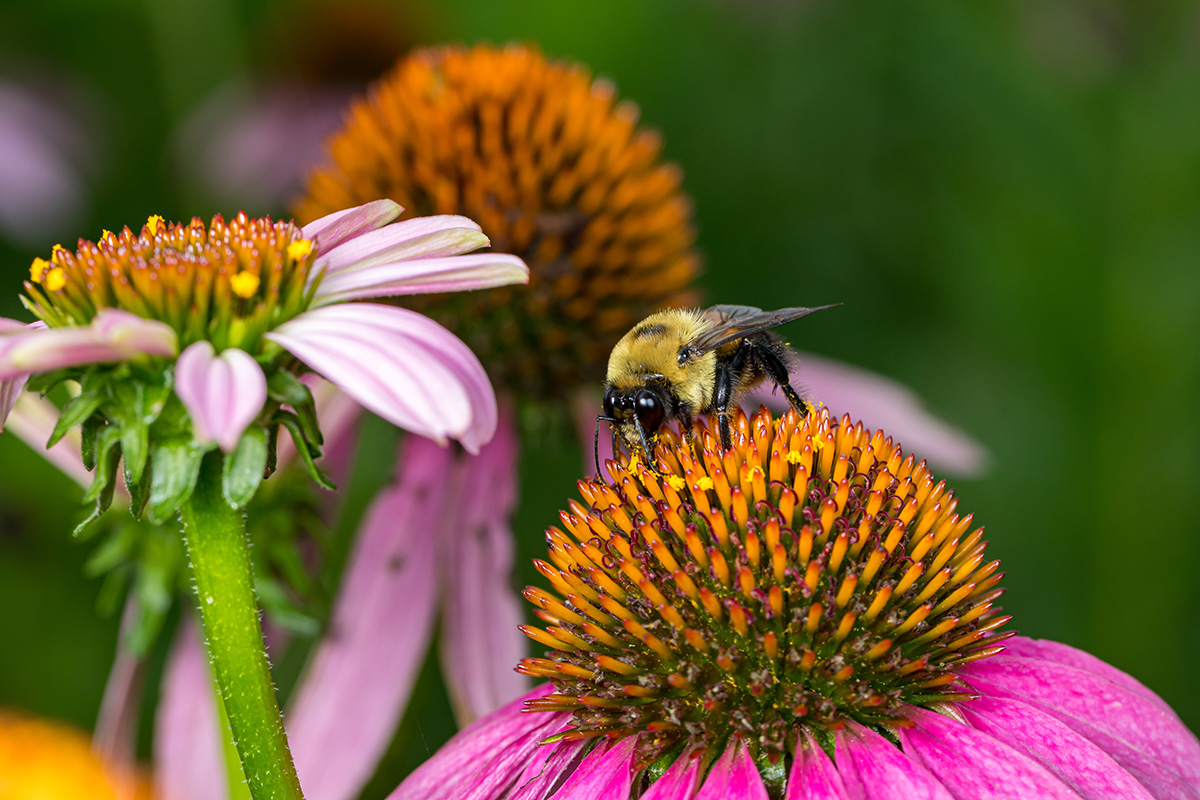Choose the Right Plants
Native plants have evolved to the conditions of our region. Not only do they generally require less maintenance (water, fertilizer, and pesticide use), they also provide food and habitat for resident and migrating wildlife such as birds, butterflies, and bees—many of which are important pollinators.
Native plants can also help reduce runoff by helping rain to soak into the ground with their deep root structure.
Go for Diversity
Monocultures, which are large expanses of the same plant, can be prone to disease and insect infestation, so it’s best to plant a range of species. A diverse selection of plants is important for wildlife as well. For example, when planting to attract pollinators like butterflies, bees, and hummingbirds, choose flowering plants that bloom at different times of the season. The overlapping bloom periods will help ensure that there is a continual food source that draws them to your property.

Native species, like this purple coneflower, attract pollinators and help sustain important native wildlife. | Photo Credit: Shutterstock
Avoid Invaders
A number of our region’s invasive species were introduced because they looked attractive. Invasive plants—like purple loosestrife—can thrive and spread aggressively outside their natural range. While its purple flowers are pleasing to the eye, purple loosestrife has overrun fragile wetland habitats, creating a dense monoculture with little, if any, wildlife value. Get to know what plants are or may be invasive to your area.
Pick Plants that Resist Pests and Use Less Water
Many pest- and disease-resistant varieties are available now—ask at nurseries or Master Gardener clinics. Choose plants that are “low water use” or “drought tolerant.” After they’re established (2-5 years), many will thrive on our limited summer rainfall most years, saving you time and money on watering. Native plants are usually the best option.
Made in the Shade
Consider strategically planting trees and shrubs around your home to help offset heating and cooling costs. Deciduous shade trees planted on the south, west, and east sides of your home will cast shade during the hot summer months while still allowing warm sunlight to come in through the windows in the cold winter months. Be sure to account for how big the tree will be once it is mature, especially around power and phone lines. Never plant trees near a septic system, as the tree roots can damage the system and lead to significant repair or replacement costs.
Cope with a Slope
Use groundcover plants or deep-rooted native plants and shrubs on steep slopes where turfgrass may not thrive or be easy to maintain.
ADDITIONAL RESOURCES
IISG Illinois Native Plants for the Home Landscape
IISG Pollinator Garden








